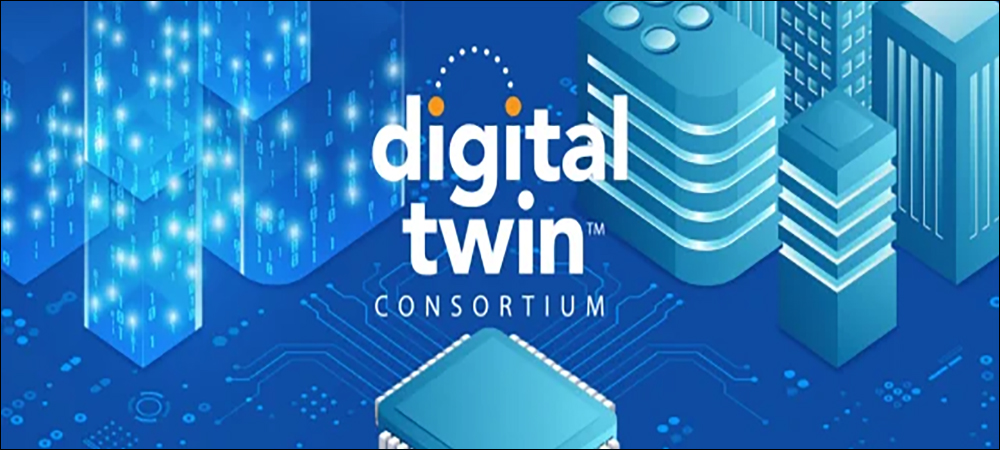Non-profit trade association the Object Management Group (OMG), along with founders Ansys, Dell Technologies, Lendlease and Microsoft, has announced the formation of the Digital Twin Consortium. According to OMG, digital twin technology enables companies to head off problems before they can occur, as well as prevent downtime, improve the customer experience, develop new opportunities, drive innovation and performance, and plan for the future using simulations. Consortium members will collaborate across multiple industries to learn from each other and develop and apply best practices. This new open membership organization will drive consistency in vocabulary, architecture, security and interoperability to help advance the use of digital twin technology in industries ranging from aerospace to natural resources.
Digital twins—virtual models of a process, product or service that allow for data analysis and system monitoring via simulations—can be challenging to implement due to a lack of open-source software, interoperability issues, market confusion and high costs, OMG explains. In order to ensure the success of the Digital Twin Consortium, several companies involved in digital twin technology have prior to its inception. These include Air Force Research Lab (US), Bentley Systems, Executive Development, Gafcon, Geminus.AI, Idun Real Estate Solutions AB, imec, the IOTA Foundation, IoTIFY, Luno UAB, New South Wales Government, Ricardo, Willow Technology and WSC Technology. Membership is open to any business, organization or entity with an interest in digital twins.
“Most definitions of digital twin are complicated, but it’s not a complicated idea. Digital twins are used for jet engines, a Mars rover, a semiconductor chip, a building and more. What makes a digital twin difficult is a lack of understanding and standardization,” said Dr. Richard Soley, the Digital Twin Consortium’s executive director, in a prepared statement. “Similar to what we’ve done for digital transformation with the Industrial Internet Consortium and for software quality with the Consortium for Information and Software Quality, we plan to build an ecosystem of users, drive best practices for digital twin usage and define requirements for new digital twin standards.”
The Digital Twin Consortium will accelerate the market for digital twin technology by setting roadmaps and industry guidelines through an ecosystem of digital twin experts. It will work to improve the interoperability of digital twin technologies by developing best practices for security, privacy and trustworthiness and influencing the requirements for digital twin standards. And it will reduce the risk of capital projects and demonstrate the value of digital twin technologies through peer use cases and the development of open source code.
An ecosystem of companies, including those from the property management, construction, aerospace and defense, manufacturing and natural resources sectors, will share lessons learned from their industries and work together to solve the challenges inherent in deploying digital twins. As requirements for new standards are defined, the Digital Twin Consortium will share those requirements with standards development organizations such as parent company OMG. Ansys, Dell, Lendlease and Microsoft will each hold permanent seats on an elected Steering Committee, providing the strategic roadmap and creating member working groups.
“Microsoft is joining forces with other industry leaders to accelerate the use of digital twins across vertical markets,” said Sam George, Microsoft’s corporate VP for Azure IoT, in the prepared statement. “We are committed to building an open community to promote best practices and interoperability, with a goal to help establish proven, ready-to-use design patterns and standard models for specific businesses and domain-spanning core concepts.”
“The application of the Digital Twin technology to Lendlease’s portfolio of work is well underway and we are already realising the benefits of this innovation to our overall business,” added Richard Ferris, Lendlease’s CTO for digital twin R&D, in the statement. “The time for disruption is now, and requires the entire ecosystem to collaborate together, move away from the legacy which has hindered innovation from this industry, and embrace Digital twin technology for the future economic and sustainable prosperity of the built world. Digital Twin Consortium is key to the global acceleration of this collaboration and the societal rewards we know to be possible with this technology and approach.”
“Dell Technologies is proud to be one of the founding members of Digital Twin Consortium. As the rate of digital transformation continues to accelerate, industry-standard methods for Digital Twins are enabling large scale, highly efficient product development and life cycle management while also unlocking opportunities for new value creation. We are delighted to be part of this initiative as we work together with our industry peers to optimize the technologies that will shape the coming data decade for our customers and the broader ecosystem,” said Vish Nandlall, Dell’s VP of technology strategy and ecosystems, in the prepared statement.
“The Consortium is cultivating a highly diverse partner ecosystem to speed implementation of digital twins, which will substantially empower companies to slash expenses, speed product development and generate dynamic new business models,” noted Prith Banerjee, Ansys’s chief technology officer, in the statement. “Ansys is honored to join the Consortium’s esteemed steering committee and looks forward to collaborating closely with fellow members to further the Consortium’s success and help define the future of digital twins.”


